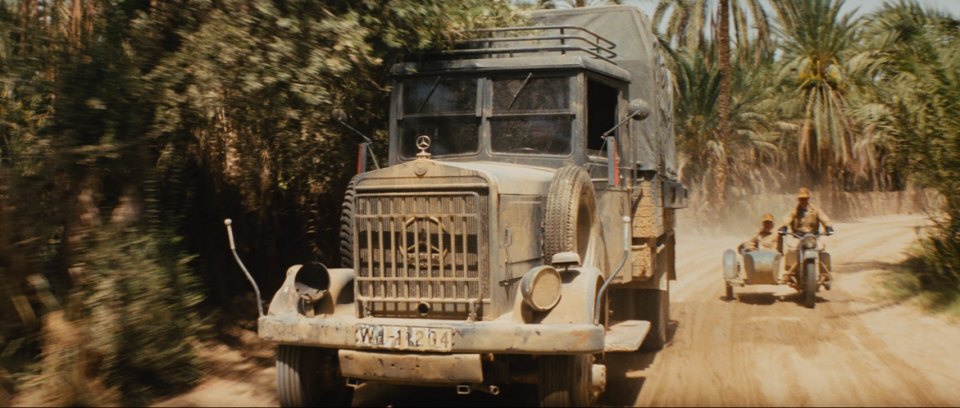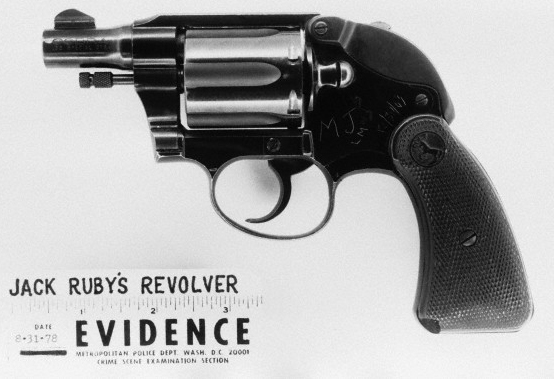Montana Smith
Active member
A little change round.

Still awaiting the zombie apocalypse.


Still awaiting the zombie apocalypse.









Alice: The Umbrella Corporation thought they'd contained the infection. Well, they were wrong. Raccoon City was just the beginning. Within weeks, the T-virus had consumed the United States. Within months, the world. The virus didn't just wipe out human life. Lakes and rivers dried up, forests became deserts and whole continents were reduced to nothing more than barren wastelands. Slowly but surely, the Earth began to wither and die. What few survivors there were learned to keep on the move. We avoided major cities. If we stopped anyplace too long, they would be drawn to us. Only a few at first, but then more and more. A never-ending army of undead. For those of us left, staying on the road seemed the only way to stay alive.

DiscoLad said:Montana, that Griswold & Gunnison .36 looks an awful lot like the same kind of gun used by John Dunbar in "Dances with Wolves" starring Kevin Costner. Googling it though, I don't think it.
Smiffy said:In Dances With Wolves, John Dunbar was using the Colt 1851 Navy .36, from which the G&G was copied:


By August 1923, with the value of the German Mark fluctuating from day to day, designing and printing new postage stamps was out of the question. For the postal service of the Weimar Republic, there existed a state-of-emergency.
Beginning in August and proceeding through October of 1923, the postal service began applying re-valuation overprints to existing stocks of low denomination stamps. The re-valuations ranged from 5,000 Marks to 2,000,000 Marks.
...
The 1923 postal rate table, for domestic / foreign letters under 20 grams, is shown below. By October of 1923, 2,000,000 Marks wasn't even enough to mail a single domestic letter, thus by that time, most of the re-valued stamps, shown in the images above, were all useless.
Letter Postage Rates for 1923
For Domestic / Foreign Letters, Less than 20 Grams
1923-JAN-15 -- 20 Marks / 150 Marks
1923-MAR-01 -- 40 Marks / 300 Marks
1923-JUL-01 -- 120 Marks / 800 Marks
1923-AUG-01 -- 400 Marks / 3,000 Marks
1923-AUG-24 -- 8,000 Marks / 60,000 Marks
1923-SEP-01 -- 30,000 Marks / 200,000 Marks
1923-SEP-20 -- 100,000 Marks / 750,000 Marks
1923-OCT-01 -- 800,000 Marks / 6,000,000 Marks
1923-OCT-10 -- 2,000,000 Marks / 15,000,000 Marks
1923-OCT-20 -- 4,000,000 Marks / 30,000,000 Marks
1923-NOV-01 -- 40,000,000 Marks / 200,000,000 Marks
1923-NOV-05 -- 500,000,000 Marks / 4,000,000,000 Marks
1923-NOV-12 -- 5,000,000,000 Marks / 40,000,000,000 Marks
1923-NOV-20 -- 10,000,000,000 Marks / 80,000,000,000 Marks
1923-NOV-26 -- 40,000,000,000 Marks / 320,000,000,000 Marks
1923-DEC-12 -- 50,000,000,000 Marks / 300,000,000,000 Marks
Due to the rate of hyperinflation, the previously surcharged issues had become obsolete. This required the creation of a new series of postage stamps, suited to keeping up with the rising postal rates.
The stamps...in denominations from 500,000 Marks through 50,000,000,000 Marks, were issued in October 1923. Actually, after about two months, these new stamps were also on the verge of being obsolete. By the beginning of December 1923, a domestic letter cost 50,000,000,000 Marks to mail, and a letter being mailed outside Germany cost 300,000,000,000 Marks.
...
In December 1923, hyperinflation in the Weimar Republic ended! A new currency, the Rentenmark, was instituted, and the German economy began to recover.
In 1924, one Rentenmark (or Reichsmark) was equivalent to ONE BILLION Papermarks of the Weimar Republic hyperinflation period. Exchanging the old paper currency was futile, and many people, businesses, and banks, either re-cycled the old paper Marks or threw them in the trash.
Henry Jones VII said:Wow the Terminator figures are really good. so authentic.





Henry Jones VII said:the level of detail is superb. The likeness of the Arnold face is quite something!






http://en.wikipedia.org/wiki/Dnepr_(motorcycle)Dnepr (Russian: Днепр, Ukrainian: Дніпро; Dnepr) is the brand name of heavy motorcycles produced in Kiev, Ukraine. It has been in use since 1967.
Motorcycles have been produced in Kiev since 1946 at the Kiev Motorcycle Plant (Kievski Mototsikletnyi Zavod (KMZ), Киeвский Мотоциклетный Завод, (КМЗ)). Initial production was of a 98 cc two-stroke model that was confiscated from the German firm Wanderer as reparations. The original design for KMZ heavy motorcycles, and their cousin the IMZ, is taken from the pre-World War II German BMW motorcycle R71, which the Soviet Union licensed in 1940. The plant and equipment needed to make the M-72 (the Soviet derivative of the BMW R71) was transferred from the Gorkiy Motorcycle Plant (Gorkovkiy Mototsikletnyi Zavod, GMZ located in the city of Gorkiy (Nizhny Novgorod) in 1949. The first batch of M-72 motorcycles was produced in 1952 with the supply of 500 engines from IMZ. In 1958 KMZ replaced the plunger framed M72-N with the swingarm framed K-750. In 1964, KMZ introduced a military model, the MV-750 with a differential two-wheel drive to the sidecar wheel. In 1967, to celebrate the 50th Anniversary of the Great October Socialist Revolution, KMZ released their first OHV engine in the "Dnepr" K-650. Unlike the earlier sidevalve engines with their roller bearing crankshafts, this engine featured a sleeve bearing crankshaft as found in the World War II Zündapp KS750. The K-650 was superseded by model MT-9 650 cc, which was available in both solo and sidecar models (often referred to as the best "Cossack") as it was reliable and featured a new transmission with reverse gear and an automatic declutching mechanism incorporated into the riders foot pedal. The MT-10 was the first Soviet motorcycle to feature 12 volt electrics.
The Dnepr is famous for its off-road capability. Armed services models equipped with sidecars had two-wheel drive and as much as 15 cm (5.9 in) of ground clearance. The present engine is a 650 cc OHV boxer twin. Modern models are sold with engines ranging from the factory standard 650 to 750 and 1,000 cc.
These motorcycles have featured in many films like Indiana Jones and used prominently in the movie Garden State, with Zach Braff.
Between 1973 and 1979 Dnepr was one of the makes marketed by Satra in the United Kingdom as Cossack motorcycles.[1]
Since demise of U.S.S.R. the factory had fallen on very hard times. Production decreased to only remnants of former glory. All shops were closed, and machine tools were taken out of the city limits.

Montana Smith said:Most of Hot Toys sculpts are very well done. There are a few exceptions.
*cough* Indiana Jones *cough* (!)
Other companies are improving, such as VTS/DAM TOYS. I'm very much looking forward to the release of the VTS 'Revenger', an unlicensed 1/6 Ray Stevenson from the film Punisher: War Zone.



Henry Jones VII said:wow, badass!







The Colt Cobra is a snubnose revolver, and is a lighter version of the Colt Detective Special. The Colt Cobra was preferred by detectives and policeman over the competing Smith & Wesson revolvers at the time.
The Colt Cobra is also known to be the revolver used by Jack Ruby to shoot and kill Lee Harvey Oswald, President Kennedy's alleged assassin on November 24, 1963, after the President had been shot 2 days prior. The revolver is seen in the iconic photograph that captured the moment Oswald was shot. Ruby's revolver was equipped with a hammer shroud, meaning he likely did not **** the hammer before shooting Oswald.
Specifications
(1950-1981)
Type: Revolver
Caliber(s): .22 LR, .32 Colt New Police, .38 Special
Weight: 0.94 lbs (0.43 kg)
Barrel length: 2 in (51 mm)
Capacity: 6-round Cylinder
Fire Modes: DA/SA
















Wikipedia said:The town was first mentioned around 810 and received a statute in 1260, which makes it one of the oldest known towns in Austria.

Allied Military Currency ("AMC") was a form of currency issued by the Allied powers during World War II, to be issued to troops entering liberated or newly occupied countries, as a form of currency control.
Historically, soldiers serving overseas had been paid in local currency rather than in their "home" currency; most cash drawn by soldiers would go directly into the local economy, and in a damaged economy the effects of a hard currency such as the dollar circulating freely alongside weaker local currencies could be severely problematic, risking severe inflation. There were other problems as well; once dollars were circulating in a combat region, the opposing side could freely use its own stocks of dollars as currency, or acquire stocks for use elsewhere. The high purchasing power of the dollar, and its easy transference back to the United States, also posed a significant incentive to black-marketeering.
However, whilst the use of local currencies was effective where they were provided in cooperation with the local authorities, it was impractical in combat zones where the government might be either hostile, deliberately ambivalent, or simply non-existent. In these cases, the military authorities issued special "military currency", which was paid out to soldiers at a fixed rate of exchanged and simply declared legal tender in occupied areas by local commanders.


The military notes were important for the Americans because they did not want United States banknotes to be available to the enemy in the war zone. These military notes could only be used locally so it helped the Allied to keep some control over their economy. The banknotes were prepared ahead of time and brought ashore on D-Day by the liberating American forces. They were printed in denominations of 2 francs to 5,000 francs.
The AMG notes were controversial. General DeGaulle complained that the Americans were interfering with French internal affairs and went so far as to call the American military francs “counterfeit money.” They were also forged extensively by both local civilians and later it is alleged, in the case of German occupation marks, by America’s Soviet allies.
At present, eleven different propaganda leaflets are known that depict this note. Two are in the form of the 5-franc banknote and open to show anti-Allied propaganda. The other nine are leaflets that show the AMG currency either in color or black and white.


